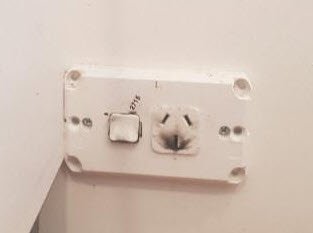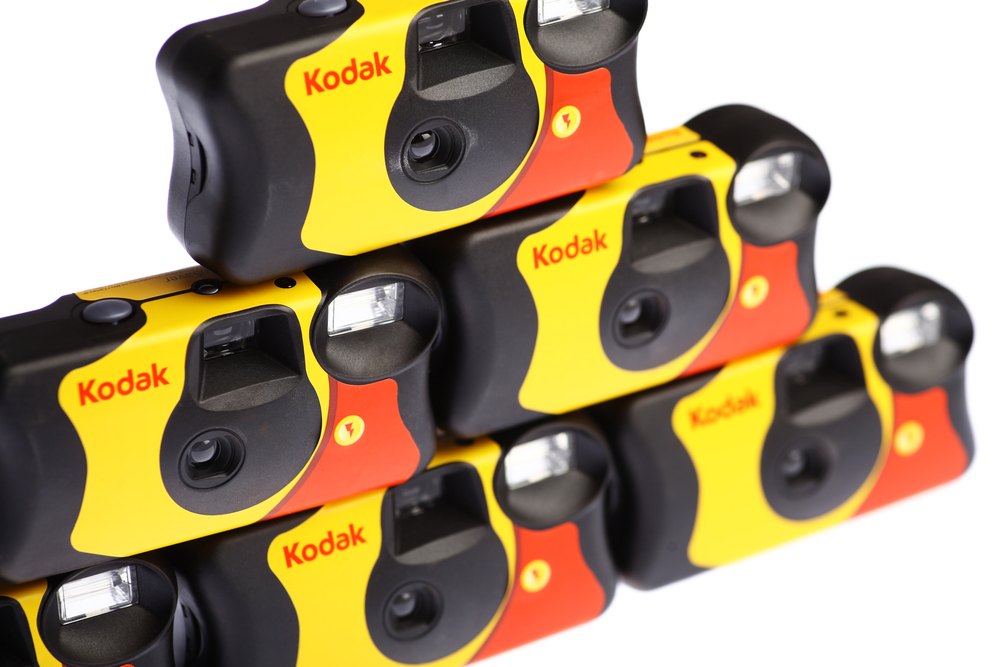Remember winding Kodak film onto your camera? What about hiring videos or DVDs from United? Why did these companies get left far behind when innovation struck?
The Fall of Kodak
Founded in 1888, Kodak was the number one brand in the world of photography with sales of over $10 billion in 1981.
Kodak, for many years, enjoyed unmatched success all over the world. By 1968, it had captured about 80% of the global market share in the field of photography.
That was back in the days of analog cameras that needed a roll of film and chemical processing. I know, I’m that old!
As technology progressed, the use of films and printing sheets gradually came to a halt. This was due to the invention of digital cameras in 1975. However, Kodak dismissed the capabilities of the digital camera and refused to do something about it. Did you know that the inventor of the digital camera, Steve Sasson, was an electrical engineer at Kodak when he developed the technology? When Steve told the bosses at Kodak about his invention, their response was:
“That’s cute, but don’t tell anyone about it.”
By the 1990’s Kodak began to struggle as a result of the decline in sales of photographic film and its slowness in moving to digital photography, despite developing the first self-contained digital camera. Kodak filed for bankruptcy in 2012.
DVD Stores Close
By 2009, there were more than 650 DVD retail stores in New Zealand.
By 2013, the DVD rental market was worth $109 million per year. In 2019 NZ’s largest DVD rental store, Civic Glenfield in Auckland, closed its doors.
Nick Thomas has owned Civic Glenfield in Auckland for 21 years, but has decided to bring the curtains down on the business with DVD rentals on a steep decline, and online gaming killing the games rental side of the business.
“We have no regrets. We have really enjoyed ourselves in the industry. We always knew nothing is forever,” Thomas said.
At one point Civic Glenfield was so popular, Thomas needed a roster of 22 staff to run the shop.
It’s truly sad to see these guys bow out with nothing to show for their work. At least Kodak had the ability to shift, and in fact, could have been first movers. Smaller businesses like Civic don’t always have the option to diversify.
They Failed to See the Writing on the Wall
These are simply two stories of thousands of successful businesses that didn’t see what was coming, or couldn’t do much about it.
Sticking to what had made them successful led to their demise.
I wonder who the next victims will be?
In a rapidly evolving business climate we see a steady increase in the use of artificial intelligence, machine learning, virtual reality and robotics. Sign of the times.
Computers largely store data in the cloud now. My kids have laptops with no apps installed – its all online.
Every year there are more and better alternative power sources – for homes and for vehicles.
Who will get lost in this race of adaptation and innovation?
Electric Vehicles in NZ
From the 1st July 2021, a Clean Car Discount (CCD) will become available to those purchasing an electric vehicle and registering it for the first time in New Zealand. People buying new electric and hybrid vehicles will be able to get up to $8625 back from the government.
Electric Vehicle (EV) dealers have been swarmed with customers following the announcement of a rebate scheme.
EV dealerships in Auckland are witnessing a surge in demand, but are also sounding warnings about limited stock sending prices skyward.
And the biggest concern consumers in New Zealand had was whether or not it would apply to their utes! Fair enough. Who doesn’t love a Ute in NZ? Way back in the day, Barry Crump helped make the Toyota Hilux an icon in kiwi culture. And we’ve been mad for them ever since.
“Just hang on up here mate — she gets a bit bumpy aye” – Crumpy
Many people are already aware that the Ford Ranger is New Zealand’s most popular vehicle – not just in Utes, all vehicles!. Over the last financial year, the Ford Ranger outsold the Toyota Hilux with 7,975 units to Toyota’s 5,796 – over 2,000 more.
But I have to ask, is the writing on the wall? Will Ford and Toyota see it in time? Or are EVs simply a fad that will pass?
I know things are changing when my kids stop playing red-car, green-car and start calling out every time they see a Tesla on the road.
Recently, two manufacturers have indicated that they are serious about EVs.
Emerging Technology Sends a Signal
According to Stuff, German maker Electric Brands has built a new modular platform for electric vehicles.
The funny little truck-van-thing that looks like the Honda e’s commercial cousin can be configured as a fully enclosed bus, a pickup with a fixed bed, a different truck with a tilting bed, and a flatbed version with fold-down sides. There will even be a camper variant with a refrigerator, sink, stove, and TV inside.
Under the skin is a tiny 10kWh battery, though that’s enough to power the lightweight EV for around 200km per charge. An optional upgrade pack triples the capacity and triples the range (30kWh and 600km respectively).

Stuff report that, Electric Brands says it wants to make the Xbus available globally “as soon as possible”.
Meanwhile, RAM’s parent company, Stellantis, has revealed its plans for an EV offensive. It includes an all-electric full-size Ram 1500 pick-up, but it also involves a smaller, mid-size ute that is being spec’d to fight the Rangers and Hiluxes of the world.

It’s a few years away from production, but they are sending a loud signal to those invested in the status quo.
Other upcoming electric and electrified vehicles include a hybrid Jeep Grand Cherokee later this year, as well as small cars. There even will be an electric Dodge muscle car. The company says it will use its electric commercial vehicle expertise from Europe to build EV models worldwide. It says Jeeps, known largely for going off-road, will have zero-emissions electric vehicles in every market segment by 2025.
Its Hasn’t Been All Smooth Sailing

Even as Kiwis adopt electric vehicle technology in record numbers, there are still a few wrinkles to be ironed out.
More than a few EV car owners have experienced the pitfalls of EV dealers selling the car without required accessories.
North shore electricians Jenco Electrical say that, car chargers do plug into a standard household power socket. However, this creates its own problems.
Jenco say that its unlikely that the outlet has the necessary safety devices in the event of a fault occurring. The constant load the socket is drawing can cause the power point to burn out.
They suggest that, if you have a “granny charger” at home please follow the following guidelines issued by Worksafe New Zealand:
- Only use electric vehicle charging adaptors supplied by the vehicle manufacturer or by an electric vehicle supply equipment (EVSE) manufacturer.
- Do not use any household adaptor between your EV charger and a socket outlet. For example, a multi-box, double adaptor, extension cord or a travel plug.
- Never use damaged or modified charging equipment. For example, overseas equipment that has been fitted with a New Zealand plug.
- Make sure the charger you are supplied with is NZ compliant. It must also be supplied with an SDOC (Supplier Declaration of Conformity) stating it is safe to use in New Zealand.
- Don’t use any faulty charging equipment, get it checked by the manufacturer.
For a faster and safer charge get a wall charger with the earth leakage devices installed. It will be fed off a dedicated circuit (normally 32A supply) and fitted with RCD safety protection. This will need to be done by a registered electrician.
You can read their full recommendations here.
Back to Toyota
Toyota have reiterated that electric Utes will not be here in a hurry.
Stuff report that, Prime Minister Jacinda Ardern told host Duncan Garner that “within the next – we’re hoping the next 12 to 24 months – the likes of Toyota are talking about bringing in EV utes”.
However, Toyota New Zealand’s chief executive officer, Neeraj Lala, has made it clear this won’t be the case.
“I’d like to reiterate that we do not have any plans for a battery electric Hilux in our line-up in the next 18 – 24 months,”
So Toyota are unlikely to win the race.
Fully electric LDV T60 set to land in 2021
According to DRIVEN, LDV has confirmed that its double-cab ute, the T60, will be producing a fully electric variant in 2021. Production is set to kick off in the second quarter, with Kiwi arrivals stated to start in the third quarter.
They quote Andrew Bayliss, General Manager of LDV importer Great Lake Motor Distributors, as saying:
“These are very exciting times indeed, and to be at the cutting edge and leading the EV charge in the commercial vehicle sector is something we are delighted to be celebrating,”
What is clear is that there are plenty of manufacturers who will not bury their head in the sand as Kodak did.
What about you and your business?
Are there signs that technology, products or processes are changing? Are you resolutely clinging to the status quo when you should be changing?
Its worth thinking about.
My suggestion? Form a multi-sector discussion group to explore industries other than your own. This will also allow people from different sectors to tell you what you can’t see about your business.
This is how creativity and innovation blossoms.
“The most creative insights combine ideas from very different conceptual domains… The further apart the domains you combine the more creative the combination”
You can read more about this in my recent article on creativity and innovation.
